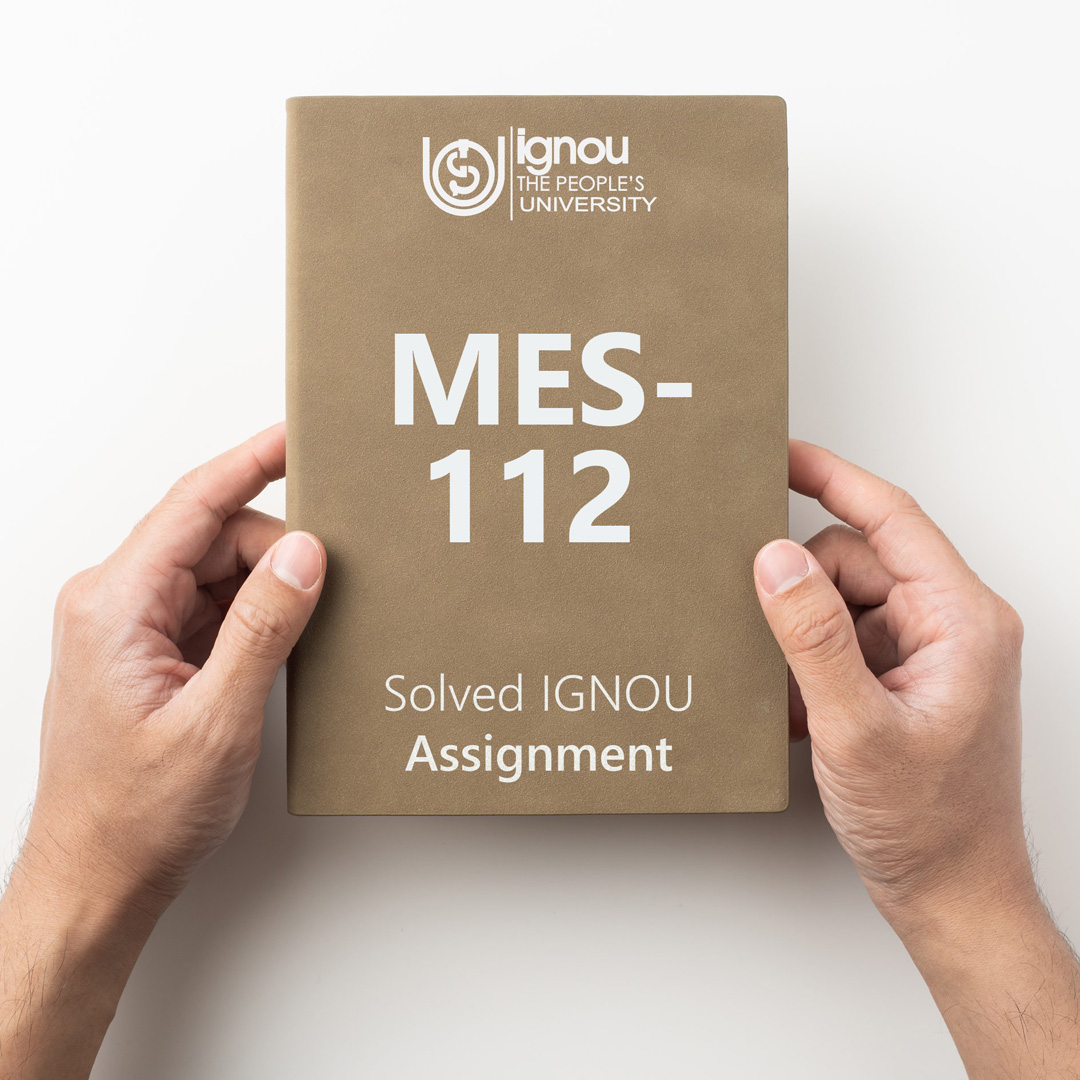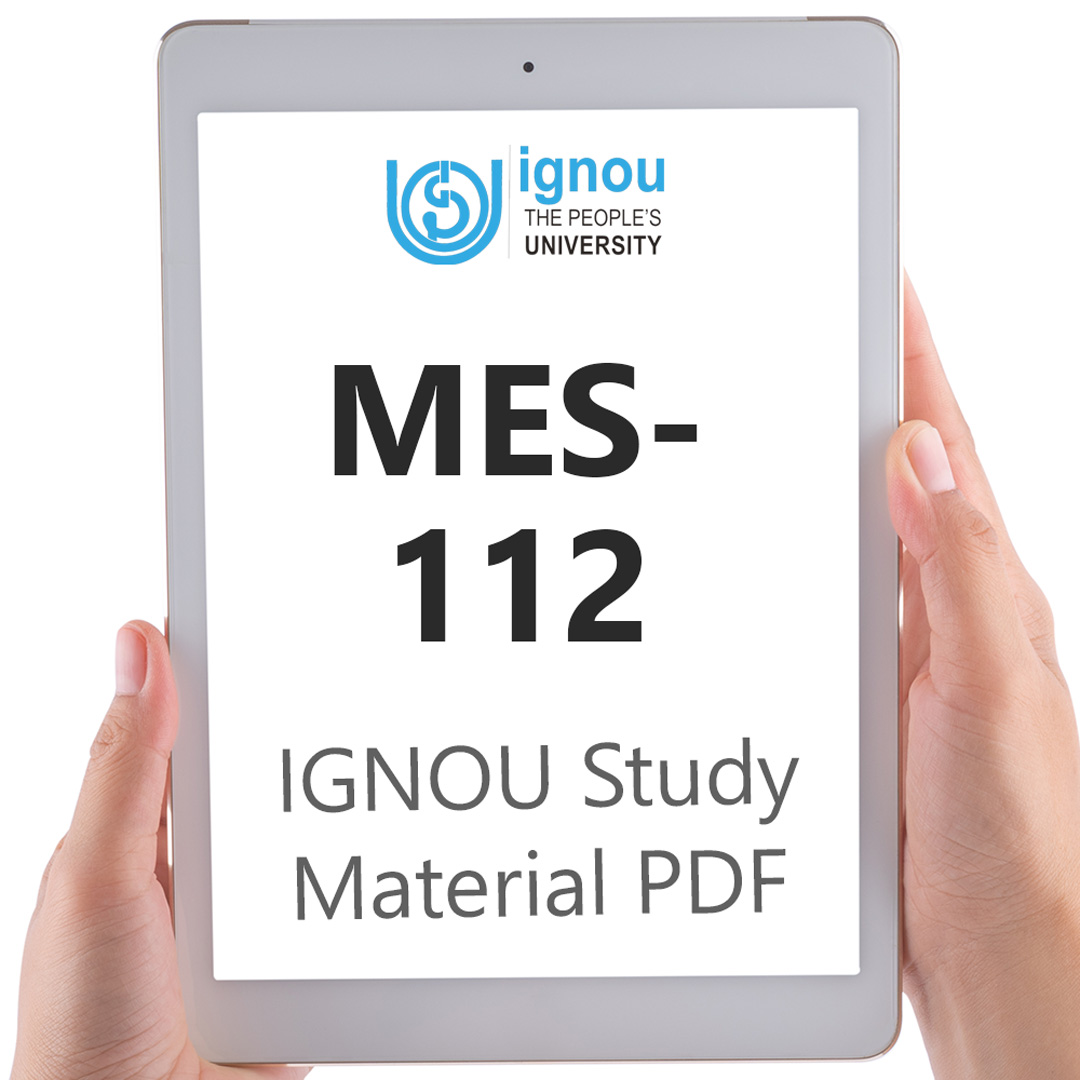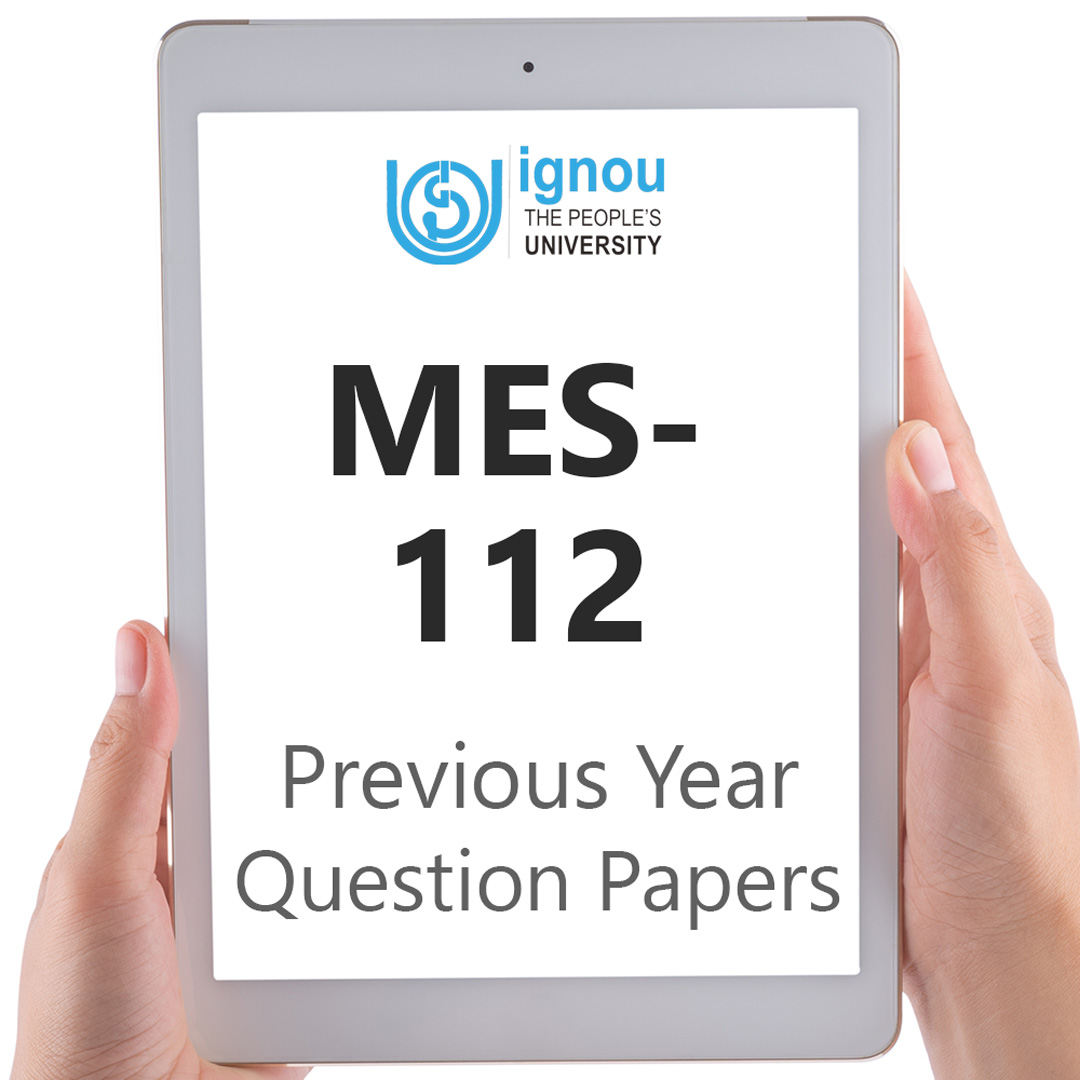If you are looking for MES-112 IGNOU Solved Assignment solution for the subject Design and Development of Self-Learning Print Materials, you have come to the right place. MES-112 solution on this page applies to 2023 session students studying in MAEDU courses of IGNOU.
MES-112 Solved Assignment Solution by Gyaniversity
Assignment Code: MES-112/TMA/2023
Course Code: MES-112
Assignment Name: Design and Development of Self-learning Print Materials
Year: 2023
Verification Status: Verified by Professor
a) Explain the concept of Experimental Learning and Constructivism. Critically analyse Kolb’s Experimental Learning Model with suitable example. (500 words)
Ans) Experimental learning is an approach to learning that emphasizes the importance of direct experience in the learning process. It is based on the premise that individuals learn best when they actively engage in an experience and reflect on that experience to derive meaning and understanding. Constructivism, on the other hand, is a learning theory that emphasizes the role of the learner in the learning process. It proposes that individuals actively construct their own understanding of the world based on their experiences, knowledge, and beliefs. Kolb's Experiential Learning Model is a framework that combines the principles of experimental learning and constructivism. The model proposes that learning occurs through a cycle of four stages: concrete experience, reflective observation, abstract conceptualization, and active experimentation. Let's critically analyse each stage of Kolb's model with a suitable example.
The first stage of Kolb's model is concrete experience, which involves engaging in an actual experience or activity. For example, a new employee at a company may be tasked with a project and work on it to complete it. This stage is crucial because it provides the foundation for learning. Without concrete experience, there is no opportunity for learning to occur.
The second stage is reflective observation, which involves reflecting on the experience and observing what happened during the experience. This stage helps individuals develop an understanding of what happened, what they learned, and what they can do differently in the future. In the example above, the new employee may reflect on the project and identify areas where they can improve their performance.
The third stage is abstract conceptualization, which involves analysing and synthesizing the observations and reflections made in the previous stage. This stage requires individuals to think critically and develop theories about what they observed. For example, the new employee may develop theories about why certain strategies were used in the project and how they can be improved.
The fourth and final stage is active experimentation, which involves applying what was learned in the previous stages to a new experience or activity. This stage provides an opportunity for individuals to test their theories and determine if they are valid. For example, the new employee may apply their new knowledge and techniques to a different project and evaluate their effectiveness.
One of the strengths of Kolb's model is its emphasis on the importance of direct experience in the learning process. However, a limitation of the model is that it does not account for the role of social and cultural factors in the learning process. Learning is a complex process influenced by a variety of factors, including individual characteristics, cultural context, and social interactions. In conclusion, Kolb's Experiential Learning Model is a useful framework for understanding how individuals learn and develop new skills through direct experience. By emphasizing the importance of concrete experience, reflection, abstract conceptualization, and active experimentation, this model provides a practical approach to learning that can be applied in a variety of settings. However, it is essential to recognize that learning is a complex process influenced by a variety of factors, and Kolb's model is just one of many approaches to understanding learning.
b) Analyse briefly different types of Self-Learning Texts with suitable examples. (500 words)
Ans) Self-learning texts refer to materials that learners can use independently to learn new concepts or skills. These texts can take various forms, including manuals, handbooks, programmed instruction, open learning materials, study guides, wrap-up materials, and distance education units.
The different types of self-learning texts and provide suitable examples are:
Manuals and Handbooks: These texts are typically used to provide detailed instructions on how to perform specific tasks. They may include diagrams, illustrations, and step-by-step procedures. Manuals and handbooks are commonly used in technical fields such as engineering, healthcare, and information technology. Examples of manuals and handbooks include user manuals for electronic devices, training manuals for healthcare professionals, and handbooks for operating machinery.
Workbooks: Workbooks are texts designed to provide practice exercises and assessments for learners. These texts may include multiple-choice questions, fill-in-the-blank exercises, and case studies. Workbooks are often used in educational settings, such as in K-12 classrooms, to help learners practice and reinforce their understanding of course material.
Programmed Instruction: Programmed instruction is a self-learning text that presents learners with a series of questions or tasks to complete. The learner's responses determine the next task or question presented. Programmed instruction is often used in educational settings to teach a variety of subjects, including language, math, and science. A well-known example of programmed instruction is Rosetta Stone, a language learning program that presents learners with a series of pictures and words to help them learn a new language.
Open Learning Materials: Open learning materials are self-learning texts that are freely available to learners. These texts may include textbooks, articles, and videos. Open learning materials are often used in higher education settings, such as in Massive Open Online Courses (MOOCs), to provide learners with access to high-quality educational resources. Examples of open learning materials include Khan Academy, which provides free educational videos on a variety of topics, and OpenStax, which provides free open-source textbooks.
Study Guides and Wrap-up Materials: These texts are designed to help learners review and summarize key concepts and information. They may include summaries, diagrams, and practice exercises. Study guides and wrap-up materials are commonly used in educational settings, such as in test preparation courses, to help learners review and retain course material. Examples of study guides and wrap-up materials include Cliff Notes, which provide summaries of literary works, and Barron's test prep guides, which help learners prepare for standardized tests.
Distance Education Units: These texts are used in distance education settings to deliver course material to learners who are not physically present in a classroom. Distance education units may include video lectures, interactive online modules, and discussion forums. Distance education units are commonly used in higher education settings to provide learners with access to courses that they may not otherwise be able to attend. Examples of distance education units include Coursera, which provides online courses from top universities, and edX, which provides online courses and certifications.
Multimedia Materials: These texts are designed to present information through multiple modes of communication, including video, audio, and text. Multimedia materials may include interactive videos, podcasts, and online games. Multimedia materials are often used in educational settings to engage learners and provide a variety of ways to learn new information. Examples of multimedia materials include TED Talks, which provide educational videos on a variety of topics, and Duolingo, which uses gamification to help learners learn a new language.
In conclusion, self-learning texts come in various forms, each designed to cater to different learning styles and preferences. From manuals and handbooks to distance education units and multimedia materials, self-learning texts provide learners with access to high-quality educational resources that they can use to learn new concepts and skills independently.
c) Explain the importance of planning as a process for course development. What are the necessary activities that you consider important for preparation of course in distance education system? Illustrate with examples.
Ans) Planning is a crucial process in course development, particularly in the context of distance education. Effective planning ensures that the course meets the needs of learners, is delivered efficiently, and achieves the desired learning outcomes. In this essay, we will discuss the importance of planning as a process for course development and the necessary activities involved in preparing a course for a distance education system.
The importance of planning as a process for course development lies in its ability to guide the development of the course from conception to delivery. Planning helps to identify the learning objectives, develop the curriculum, design instructional strategies, and determine the appropriate assessment methods. It also helps to establish a timeline for the development of the course and ensures that the resources required for the course are available.
The necessary activities for the preparation of a course in a distance education system include:
Needs Analysis: Before developing a course, it is important to identify the needs of the learners. This involves identifying the skills, knowledge, and attitudes that learners need to acquire from the course. Needs analysis helps to ensure that the course meets the needs of learners and achieves the desired learning outcomes.
Curriculum Development: Based on the needs analysis, the curriculum for the course is developed. The curriculum outlines the topics to be covered, the order in which they will be covered, and the resources required for the course. Curriculum development ensures that the course is comprehensive and covers all the necessary topics.
Instructional Design: The instructional design determines the strategies and methods that will be used to deliver the course. It involves selecting appropriate instructional materials, designing learning activities, and determining the appropriate assessment methods. Instructional design ensures that the course is delivered effectively and achieves the desired learning outcomes.
Course Evaluation: Course evaluation involves assessing the effectiveness of the course in achieving the desired learning outcomes. Evaluation helps to identify areas for improvement and ensures that the course remains relevant and effective.
For example, let us consider the development of a course in computer programming for a distance education system. The necessary activities for the development of the course may include a needs analysis to identify the specific programming skills required by learners. The curriculum for the course would then be developed based on the needs analysis. Instructional design would involve selecting appropriate programming languages, designing programming exercises, and developing instructional materials such as video tutorials and interactive quizzes. Course evaluation would involve assessing the effectiveness of the course in developing learners' programming skills and identifying areas for improvement.
In conclusion, planning is an essential process for course development in a distance education system. The necessary activities for the preparation of a course include needs analysis, curriculum development, instructional design, and course evaluation. Effective planning ensures that the course meets the needs of learners, is delivered efficiently, and achieves the desired learning outcomes.






